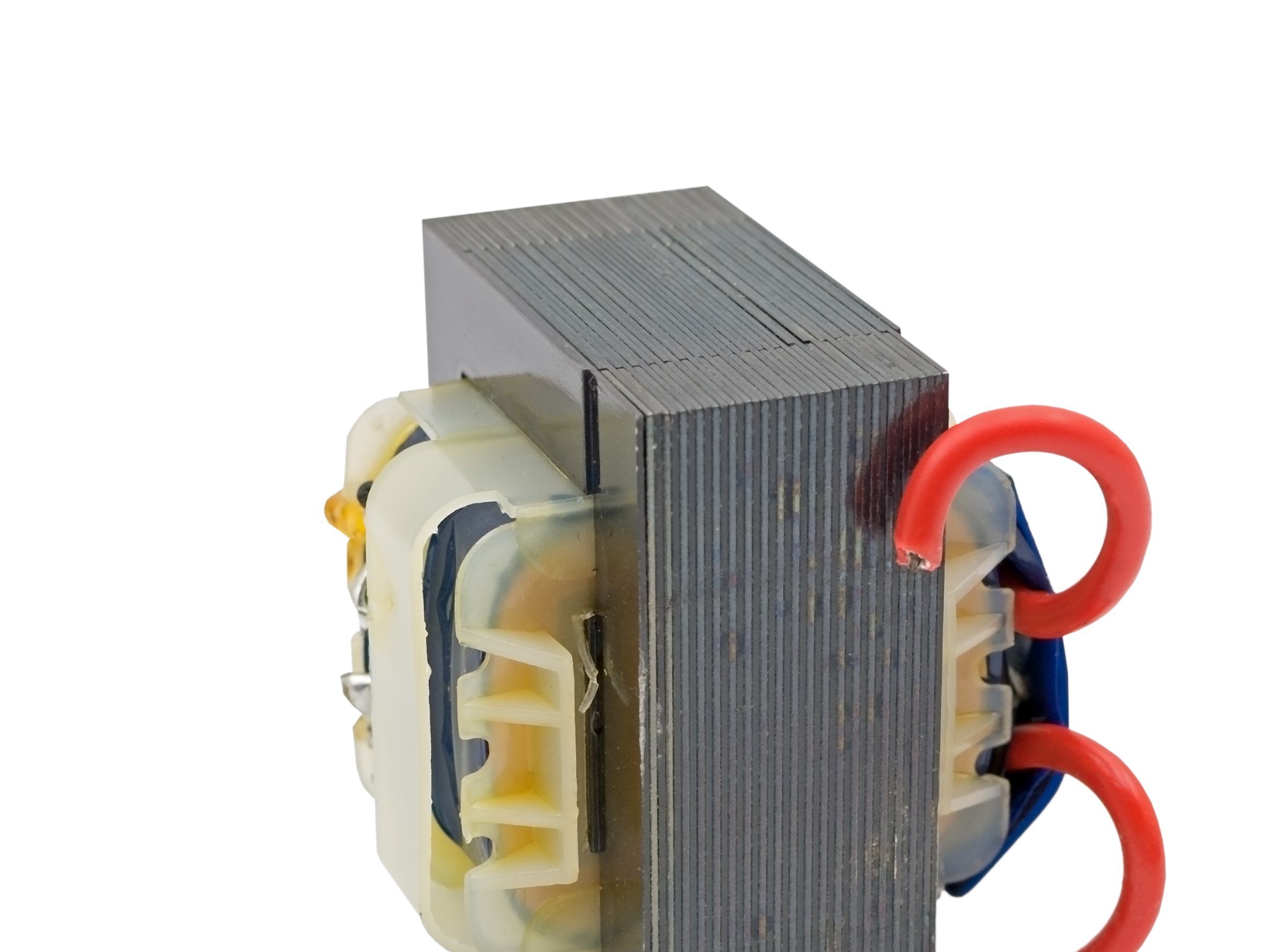A transformer is made up of a magnetic iron core with two coils of wire – one at either side of the core. These two coils are separate and do not touch each other, as shown in the diagram below:

If an alternating current is passed through a coil, the strength of the magnetic field generated will also continuously change. As the size of the current increases, so does the strength of the magnetic field. If the current decreases, so does the strength of the field.
The first coil is known as the primary coil and the second coil is known as the secondary coil. The alternating current input to the primary coil changes the direction of the magnetic field quickly. This change in the direction of the magnetic field induces an alternating voltage and alternating current in the secondary coil.
Transformers can be used to change voltages but only if the current is alternating current (a.c.). They can increase or decrease the voltage depending upon the ratio of the number of turns on the primary and secondary coils. If the number of turns on the primary and secondary coils are equal, there is no change in the voltage induced. The output voltage is equal to the input voltage.
A transformer changes the size of an alternating voltage by having different numbers of turns on the input side or primary coil and the output side or secondary coil. The size of the voltage generated in the secondary coil of a transformer depends on the voltage in the primary coil and the number of turns on each coil. There is a relationship between the voltages across each of the coils and this is described by the equation:
You must know and be able to use this equation as it is not provided in the exam.
Remember, voltage is quoted in the unit volts (V). This equation can also be written as:
Where Vs = input voltage, Vp = output voltage, Np = number of turns on the primary coil and Ns = number of turns on the secondary coil.
Example
A transformer has 200 turns on its primary coil and 400 turns on the secondary coil. An alternating voltage of 2 V is applied across the primary coil. Calculate the voltage induced in the secondary coil.
We can substitute the values in:
The equation can then be rearranged to find the output voltage as follows:
If we assume that a transformer has an efficiency of 100% we can say that the power input is equivalent to the power output. Power is a measure of the energy transferred so if the power input and output are equal, the energy entering the primary coil per second is equal to the electrical energy that is leaving the secondary coil each second.
Power can be calculated using the equation:
Power is measured in watts (W)
Current is measured in amperes (amps) (A)
Voltage is measured in volts (V)
The relationship between the power input and output is shown by the equation:
input power = output power
where Vp = voltage in primary coil, Vs = voltage in secondary coil, Ip = current in the primary coil, Is = current in the secondary coil.
You must know and be able to use this equation as it will not be provided in the exam.
Example
A voltage of 15V is applied across the primary coil of a step-down transformer. A current of 0.8A flows through the primary coil.
Calculate the current flowing through the secondary coil if the voltage induced across it is 3V.
Assume that the transformer has 100% efficiency.
We substitute the values provided from the question into the equation:
We then rearrange the equation to find Is:
Transformers and the UK national grid
The electricity generated in power stations has to be sent out to consumers across the country. The national gird is a system of cables and transformers used to transfer electrical energy from the power stations to homes and buildings across the country where it is needed. The distance between the power station and the consumers may be very large, so it is important that the voltage used to send out the electricity is very high. However, if the voltage is too high, our mains supply circuits in our homes would not be able to cope with it.
Transformers are used as part of the national grid system to make sure that the electrical energy can be transferred around the country whilst also making sure that it is safe enough for us to use at the other end.
A step-up transformer is used to increase voltage. A step-up transformer has more turns on the secondary coil than the primary coil. When electricity is generated, the alternators pass currents and these then go through the step-up transformers. In the step-up transformer, the voltage of the electricity is increased to approximately 400 kV and the size of the electric current is decreased greatly. If the voltage is high, it can be very dangerous and potentially fatal. High voltage cables are supported by pylons and these are high above the ground so that they are not in contact with living organisms. When these cables reach towns and cities, they run underground and close to the locations where electrical energy is required.
A voltage of 400 kV is far too high to be safe to use in our mains supply. Most of our mains supply is 240V. A step-down transformer decreases the voltage as they have more turns on the primary coil than the secondary coil. A step-down transformer is used between the pylons and our mains supply to decrease the voltage from 400 kV to the safer 240V needed.

Interested in a Physics GCSE?
We offer the Edexcel GCSE in Physics through our online campus.









